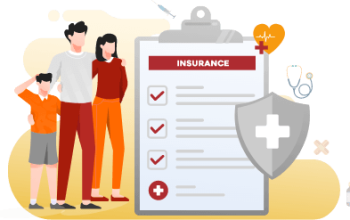Car Insurance Rates in the U.S.: Factors That Impact Your Premium
Car insurance is a crucial expense for drivers in the U.S., but many are unsure about what influences their premiums. Understanding the factors that impact your car insurance rates can help you make informed decisions and potentially save money on your policy. This comprehensive guide will explore the various factors that affect car insurance rates in the U.S., providing insights into how insurers calculate premiums and offering tips on how to lower your rates.
1. The Basics of Car Insurance Premiums
Car insurance premiums are the amounts you pay regularly to maintain your coverage. Insurers calculate these premiums based on several factors, including your driving history, vehicle type, and personal details. The goal of insurance is to provide financial protection in case of accidents, theft, or damage to your vehicle. Here’s a basic overview of how premiums are determined:
- Risk Assessment: Insurers assess the risk associated with insuring a driver based on various factors. Higher risk typically results in higher premiums.
- Coverage Levels: The amount and type of coverage you select also impact your premium. More comprehensive coverage usually means higher premiums.
2. Key Factors Affecting Car Insurance Rates
a. Driving Record
Your driving history is one of the most significant factors affecting your car insurance rates. Insurers consider:
- Accidents: Past accidents can indicate higher risk and lead to increased premiums. A clean driving record generally results in lower rates.
- Traffic Violations: Speeding tickets, DUIs, and other traffic violations can raise your insurance costs.
- Claims History: Frequent claims can suggest higher risk, leading to higher premiums.
b. Vehicle Type
The make, model, and age of your vehicle play a crucial role in determining your insurance rates:
- Make and Model: High-performance cars, luxury vehicles, and sports cars often cost more to insure due to their higher repair costs and increased risk of theft.
- Age of Vehicle: Newer vehicles typically have higher premiums due to their higher repair and replacement costs. Conversely, older vehicles might cost less to insure but may lack advanced safety features.
- Safety Features: Cars equipped with modern safety features, such as anti-lock brakes, airbags, and collision avoidance systems, may qualify for discounts due to their lower risk of accidents.
c. Location
Where you live significantly impacts your car insurance rates:
- Urban vs. Rural: Urban areas with higher traffic congestion and crime rates often have higher insurance premiums compared to rural areas with less traffic and lower crime rates.
- State Regulations: Insurance requirements and rates can vary by state due to different regulations and cost of living.
- Crime Rates: Areas with higher vehicle theft rates may result in higher premiums.
d. Age and Gender
Your age and gender can affect your car insurance rates:
- Age: Younger drivers, particularly those under 25, generally face higher premiums due to their higher risk of accidents. Older drivers may also see variations in rates based on their driving experience and health.
- Gender: Statistically, young male drivers tend to have higher accident rates compared to female drivers, which can result in higher premiums for men.
e. Driving Habits
How and where you drive influences your insurance rates:
- Mileage: Higher annual mileage increases the likelihood of accidents, potentially raising your premiums. Conversely, lower mileage can lead to lower rates.
- Commute vs. Leisure: Using your vehicle for commuting may lead to higher premiums compared to using it primarily for leisure, due to the increased time spent on the road.
f. Credit Score
Many insurers use credit scores as a factor in determining premiums:
- Credit-Based Insurance Scores: Insurers often use credit-based insurance scores to assess risk. A higher credit score can result in lower premiums, while a lower credit score may lead to higher rates.
- State Regulations: Some states have restrictions on using credit scores to determine insurance rates, so the impact can vary based on your location.
g. Coverage Levels and Deductibles
The amount of coverage you select and your deductible impact your premiums:
- Coverage Levels: More extensive coverage, including comprehensive and collision coverage, generally leads to higher premiums. Basic liability coverage will typically cost less.
- Deductibles: Higher deductibles can lower your premiums, but you’ll need to pay more out-of-pocket before your insurance coverage kicks in.
3. Tips for Lowering Your Car Insurance Premiums
a. Shop Around
Comparing quotes from multiple insurance providers is one of the best ways to find lower premiums. Rates can vary significantly between insurers, so it’s worth getting quotes from several companies to ensure you’re getting the best deal.
b. Bundle Your Policies
Many insurers offer discounts for bundling multiple policies, such as home and auto insurance. Combining your insurance needs with one provider can result in savings on your premiums.
c. Increase Your Deductible
Opting for a higher deductible can lower your monthly premiums. However, make sure you have sufficient savings to cover the higher deductible in case of a claim.
d. Take Advantage of Discounts
Insurers offer various discounts that can help reduce your premiums, including:
- Safe Driver Discounts: Maintain a clean driving record to qualify for safe driver discounts.
- Low Mileage Discounts: If you drive less than the average annual mileage, inquire about low mileage discounts.
- Good Student Discounts: Students with good academic performance may qualify for discounts.
- Defensive Driving Courses: Completing a defensive driving course can sometimes result in premium discounts.
e. Improve Your Credit Score
A better credit score can lead to lower insurance premiums. Pay your bills on time, reduce debt, and monitor your credit report to improve your credit score.
f. Choose a Vehicle Wisely
When purchasing a new vehicle, consider the insurance costs associated with different makes and models. Opt for vehicles with high safety ratings and lower repair costs to potentially lower your premiums.
g. Review and Adjust Coverage
Regularly review your insurance coverage and adjust it based on your current needs. For example, if you’re driving an older vehicle, you might consider dropping comprehensive or collision coverage if the cost outweighs the benefits.
4. Common Misconceptions About Car Insurance Rates
a. “The Cheapest Policy Is Always the Best”
While affordability is important, the cheapest policy may not always provide adequate coverage. Ensure you have sufficient coverage for your needs and compare both cost and benefits.
b. “Insurance Rates Are Fixed”
Insurance rates are not fixed and can change based on various factors, such as changes in your driving record, vehicle, or location. Regularly reviewing your policy can help you stay updated on any changes in your rates.
c. “Only Young Drivers Pay High Premiums”
While young drivers often face higher premiums, other factors such as driving habits, location, and vehicle type also play a significant role in determining rates. Drivers of all ages can experience varying insurance costs based on these factors.
d. “All Insurance Companies Use the Same Criteria”
Different insurers use different criteria and weight factors differently when calculating premiums. This is why rates can vary widely between companies, making it essential to shop around and compare quotes.
5. Conclusion
Understanding the factors that impact car insurance rates in the U.S. can help you make informed decisions and potentially reduce your premiums. By evaluating elements such as your driving record, vehicle type, location, and coverage levels, you can better understand how insurers determine your rates. Implementing strategies to lower your premiums, such as shopping around, bundling policies, and improving your credit score, can help you find more affordable insurance coverage. Regularly reviewing and adjusting your policy ensures you maintain the best coverage at the most competitive rates, providing peace of mind while on the road.


